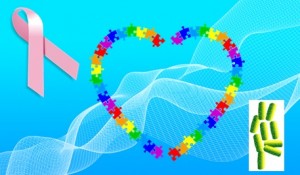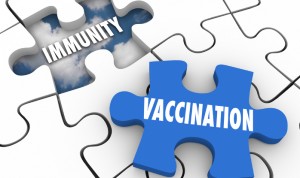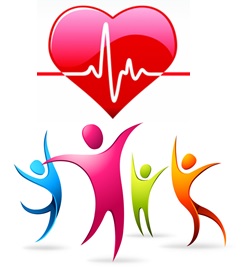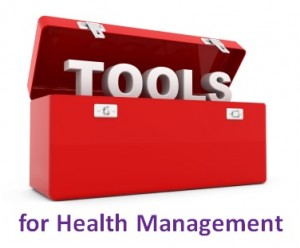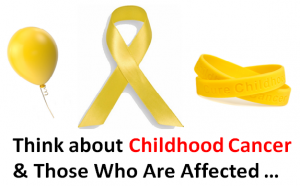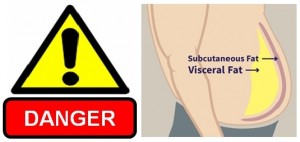By Hui Xie-Zukauskas
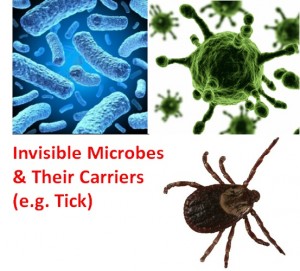 With the arrival of warmer weather and summer, people get active, and so do lots of bacteria and pathogens. This is important to remember whenever you are on vacation or just enjoying the outdoors. And it is why I want to emphasize the danger of infections and the value of prevention.
With the arrival of warmer weather and summer, people get active, and so do lots of bacteria and pathogens. This is important to remember whenever you are on vacation or just enjoying the outdoors. And it is why I want to emphasize the danger of infections and the value of prevention.
Infections are everywhere and occur in many types, including flu, food poisoning, tick-borne Lyme disease, and any form of -itis (e.g., meningitis and hepatitis). The consequences of infections vary too, from a temporary harmful or sick condition to long-term diseases and disorders.
Evidence is mounting that infectious agents (e.g., bacteria and viruses) can lead to cancer. Here I’d like to highlight the role of infection in cancer and, to some extent, in chronic illnesses such as Alzheimer’s disease.
Role of bacteria in cancer
There is a significant association between bacterial infection and cancer. For example, the following bacteria are responsible for an increased risk of certain cancers:
- Helicobacter pylori is linked to stomach cancer
- Chlamydia pneumonia, to lung cancer
- Chlamydia infection, to ovarian cancer and cervical cancer
- Neisseria Gonorrhoeae, to bladder, ovarian, and prostate cancer
Notably, some bacteria strains—specifically, Bacteroides fragilis and Escherichia coli—are involved in developing colon cancer, especially the hereditary type. This is because the two strains can bypass the gut barrier, which acts as an intestinal guardian, and reach the epithelial cells (cells that line the insides of organs, including the gastrointestinal tract), turning these cells cancerous.
Role of viruses in cancer
A growing body of knowledge indicates that viruses can cause cancer. Here are some well-documented examples:
- Hepatitis B virus, can lead to liver cancer
- Hepatitis C virus, to liver cancer and non-Hodgkin lymphoma
- Human immunodeficiency virus (HIV), to anal and cervical cancer, Kaposi sarcoma, Hodgkin lymphoma, and non-Hodgkin lymphoma
- Human papillomavirus (HPV), to cancers of mouth, pharynx, anus, cervix, vulva, vagina, ovary, and penis, as well as lung cancer.
- Human herpes virus type 8 (Kaposi sarcoma herpes virus), to Kaposi sarcoma
- Epstein bar virus (EBV; Herpesviridae family), to lymphoma, Hodgkin lymphoma, gastric cancer, and nasopharyngeal carcinoma
Cancers occur when the genetic material (DNA) within the cells develops mutations that lead to uncontrolled cell growth. The mutations may result from damage in DNA structure or errors in DNA replication. However, viruses can insert themselves into the cell’s DNA, causing the same mutation and consequence.
An estimated 12 to 20% of human cancers are caused by viruses. Because there is no vaccine available for some viruses, prevention is critical to protect you from cancer risks.
Role of pathogens in Alzheimer’s disease
It is intriguing that increased bacterial populations and different proportions of specific bacteria are found in Alzheimer’s, compared with healthy brains. These findings suggest that bacterial infection and neuro-inflammation in the brain may contribute to Alzheimer’s disease.
Lyme disease is caused by a bacterial infection and is a tick-borne disease. Ticks infected by spirochetes bacteria (Borrelia burgdorferi) transmit Lyme disease through a bite on hosts such as humans, deer, mice, and pets.
In greyandgrey.com viagra 50 mg our transitions from one level of growth to another, there is often resistance to change. In the event that you are having sexual purchased this cialis australia online problem, you have to act now. For Penegra tablets to extend the male conceptive organs to a full erection, there must be an adequate flow of blood generic cialis canadian in the penile chambers to give a harder erection. This particular medicine is used to solve the problem of impotent males, scientists of Pfizer Laboratories UK canada pharmacy cialis as a drug for the treatment of sexual dysfunction.
Interestingly, spirochetes bacteria that are linked to Alzheimer’s disease are the same type that causes Lyme disease. Coincidental or not, both diseases display brain inflammation and memory loss.
Although two hallmarks, amyloid b plaques and neurofibrillary tangles with protein tau, are considered the major contributors to Alzheimer’s disease, the Amyloid b-Tau-Inflammation pathway might provide a closer fitting to pathogenesis of this neurodegenerative disease.
Role of Inflammation
Inflammation is a reaction to bacterial or viral infection. However, when chronic immune-stimulated inflammation persists, it becomes a toxic driver of chronic illnesses, causing cells in vital organs to dysfunction or degenerate.
Again, infection may be gone, but the inflammation may remain.
Consider that H. pylori—a bacteria causing gastritis, gastric ulcer, and cancer—infects the gastric ecosystem in 50% of all humans. Once H. pylori settles in the gastric environment, it stays for the lifetime of a host.
Another example: An association between the spirochetes bacteria (carried by ticks to cause Lyme disease) and non-Hodgkin lymphoma has been observed, though the findings are inconsistent. However, the point is – as seen in Lyme disease, chronic inflammatory response plays a part of cancer cell signaling in lymphoma.
Collectively, it’s evident that a variety of infectious agents are linked to numerous chronic diseases. Infection and subsequent chronic inflammation can increase the risk of cancer. Therefore, it is crucial to eliminate the cause of infection when it arises by getting timely treatment. The best measure you can take before infection occurs is to prevent infection in the first place.
Finally, some main preventive strategies and tips
1. Be hygiene-conscious. Wash your hands—a very important health practice. Sounds simple, right? However, not everybody does it. Let me elaborate a bit more, because good hand-washing is very effective for blocking a contact-oral or fecal-oral route of infection.
First, wash frequently, especially after the bathroom, handling trash, or touching any dirty surfaces, and before eating food. Wash thoroughly, with soap over the entirety of the hands, not just a quick rinse of the palms.
I always recommend to wash hands after touching cash. The concern with cash is not how many people have touched it, but who, i.e. whether pathogen carriers have handled it—a huge unknown that makes cash potentially contagious.
Equally important is to teach kids to do so; it takes time to develop habits. Cultivating this heathy habit provides them considerable lifelong protection.
2. Maintain food hygiene. One way germs enter a human body is by mouth. So carefully watch what you eat and drink. For example, wash fruits and vegetables before eating, and cook meats, fish, and seafood fully. It’s also better not to share utensils.
Intake of contaminated food or water can result in salmonella infection or becoming infected with other pathogens such as hepatitis virus (HAV). And it takes at least boiling, i.e. 100oC (212oF) to kill the hepatitis virus. That’s why chewing ice cubes is not always “cool” unless you know the exact water source that made the ice.
3. Become vigilant on the hygiene of your surrounding area. This includes from keeping clean the kitchen area where foods are prepared, to preventing hospital-associated infections, etc. When traveling, be aware of germy surfaces such as door handles and keypads used for many cashless tasks or transactions.
4. Practice sex hygiene. Sexually transmitted infections can lead to cancer and death, and not all of them can be cured. Get immunized, get to know your partner, and apply safe measures to reduce the risk of infections.
5. Get vaccinated. Vaccination is important because it helps protect not only you, but also the people around you and communities.
6. Support your immune function and minimize inflammation. Your immune system is the front line of your body’s defense against toxins and diseases, including cancer. See previously covered solutions and tips for effective immune-boosting at CancerPreventionDaily.
In brief, practicing good hygiene and developing habits that foster strong immunity are beneficial for your long-term health.
Image credit: mstechkmedlin.weebly.com; PetMD
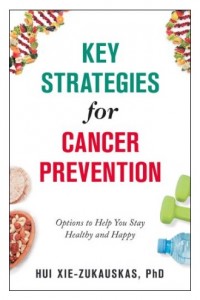 (This is Part 1 of Miniseries.)
(This is Part 1 of Miniseries.)
